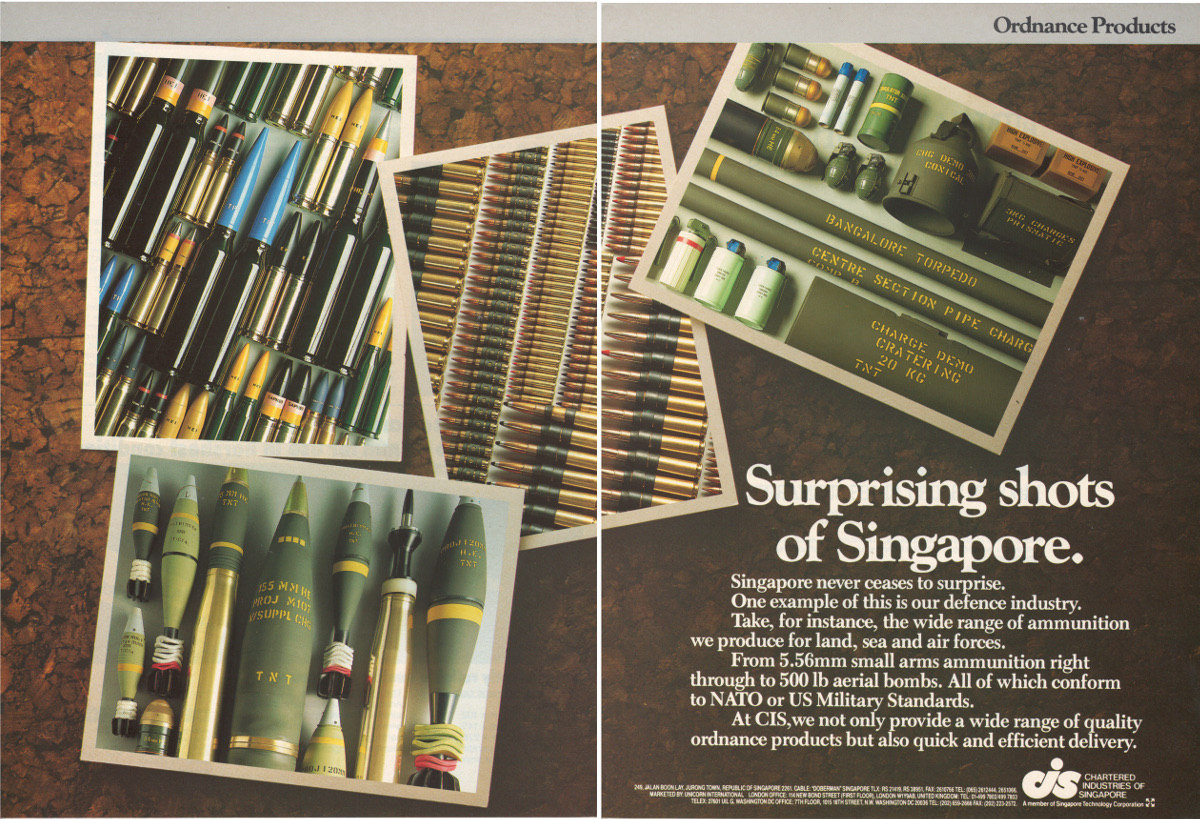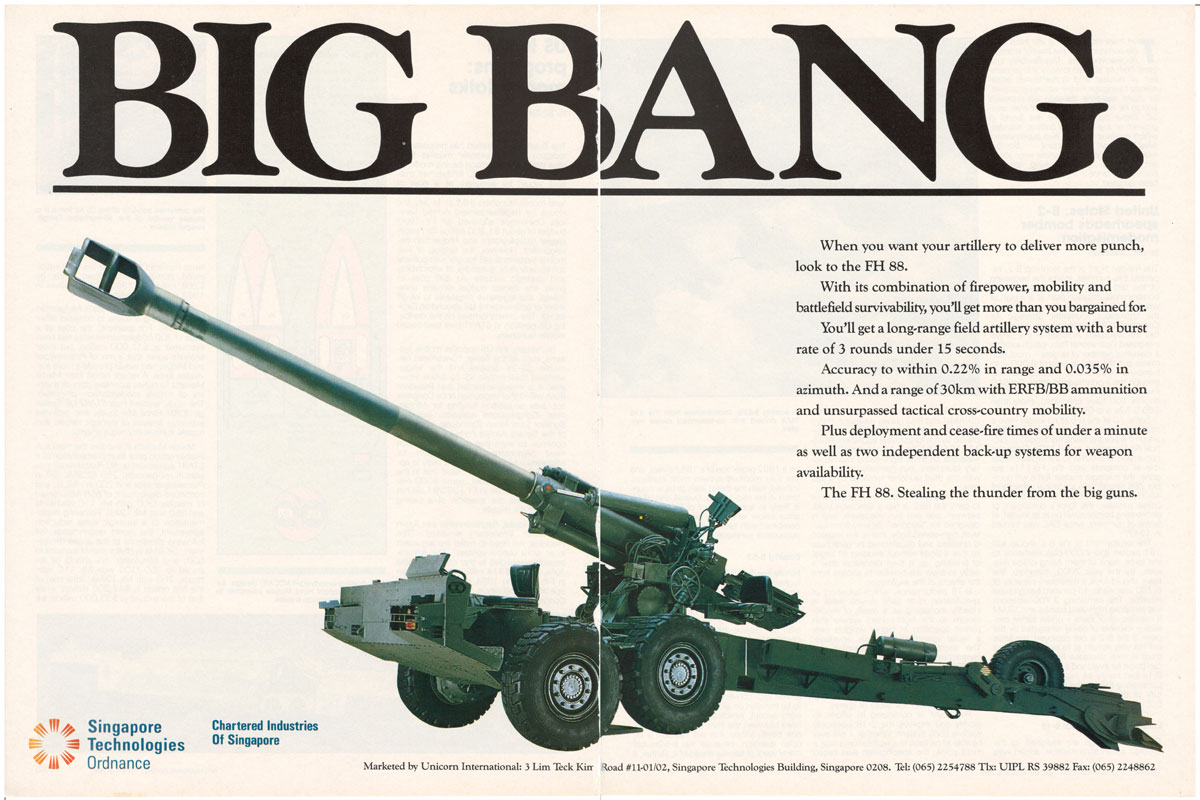Nestled in the National Design Centre is a small but steadily growing archive of Singaporean graphic design. The Singapore Graphic Archives (SGA)’s story began in 2011, and it has steadily grown to include a wide variety of materials such as matchboxes, architecture journals, advertisements and more. In order to continuously frame and reframe its collection, the archive’s window display exhibits a rotating selection of artefacts that explores different themes and ideas. In this conversation we speak with the archive’s founder, Justin Zhuang, about a couple of advertisements from the 1980’s.
Justin Zhuang is a writer and researcher who sees the world through the lens of design. He is the founder of the Singapore Graphic Archives and has worked on several books and projects about Singapore design.
Justin Zhuang is a writer and researcher who sees the world through the lens of design. He is the founder of the Singapore Graphic Archives and has worked on several books and projects about Singapore design.
¹ Surprising Shots of Singapore
Chartered Industries Singapore, 1987
Credit: Singapore Graphic Archives
² We Just Keep Growing
Chartered Industries Singapore, 1986
Credit: Singapore Graphic Archives
Chartered Industries Singapore, 1987
Credit: Singapore Graphic Archives
² We Just Keep Growing
Chartered Industries Singapore, 1986
Credit: Singapore Graphic Archives


ADVERTISING THE MILITARY
Justin Zhuang (JZ): These are advertisements from military magazines about Singapore’s weapon manufacturing capabilities. There are all of these collectors who sell military paraphernalia on eBay, so there’s where I got these works. The tagline for one of these advertisements reads: “Surprising Shots of Singapore”, and that really got my attention because it was a surprising shot of Singapore. I never really associated Singapore with the manufacture and design of military weapons, but of course, we do just that. In the late 1970s or 1980s, the Singapore Tourism Board used the slogan “Surprising Singapore” in their marketing campaigns. I’m not sure if this particular tagline draws from that, but it is an interesting connection to make.
The Chartered Industries of Singapore was renamed, and today it goes by the name of ST Kinetics. These advertisements were in trade magazines, so they wouldn’t have been seen by the general public. I find that trade and industry magazines offer a very different perspective of Singapore and what we actually produce. In these magazines, these weapons are almost sold as consumer products. These advertisements celebrate the effectiveness of these weapons to kill. Unless one went through prior military training, seeing Singapore associated with the production of weapons could be a very jarring experience.
We often talk about good design, and how design can be used to better the lives of certain communities. However, we often forget that design can bring about a lot of harm as well. Bad design can literally kill, but this advertisement also brings up the question of how subjective the word “good” in good design is. A tank such as the one advertised here is good for the person using it, but not so much for those it is being used against. The design industry is grappling with these questions on a global scale, and I think it is interesting that we can make these associations through this set of weapons and their advertisements.
Today, we don’t really parade or display equipment anymore. Warfare has shifted, and we now talk about information warfare and cyber defence. These attacks are almost entirely invisible, so how do you visualise that?
COLLECTING FOR THE ARCHIVE
JZ: Advertisements often strike their viewers as being ephemeral. One wouldn’t linger on an advertisement for long. For a long time, cultural institutions and museums did not see materials like advertisements as cultural objects. When I collect for the archive, it usually begins with me stumbling upon one example of a particular object. For example, I began collecting some of these military advertisements for the archive because I came across the “Surprising Shots of Singapore” advertisement by chance.
Some of the things I collect might strike viewers as being the domain of the National Library Board’s collection. I do think of the National Library Board as a huge design archive, but I think that when you see such objects in that collection, they are not often framed as design. That’s the gap that I want to fill with the Singapore Graphic Archives. In fact, a lot of the things I have in the SGA are colour photocopies from the National Library’s collection. When I reframe these material objects under the banner of a graphic design archive, suddenly the same object can be seen in a very different light. When we talk about design today, I’m also interested in visual culture. If we see the world as being full of signs and symbols, what sort of larger networks or cultures can we connect or relate them to?
Along the way, I’ve become more conscious or aware about what I’m collecting. I didn’t want the archive to merely function as a showcase of Singaporean designers. Designers today have extensive online portfolios, so I didn’t want to add to that noise or duplicate what was already available. I wanted to look further back into our history, and to look into undocumented stories. For example, we have a couple of Journal of the Singapore Institute of Architects (SIAJ) issues. Aesthetically, I’m interested in their modern and clean design. But when you study them more closely, you realise that these journals commented on Singapore’s development in the post-independence period. This sort of sentiment was communicated not just through the journal’s content, but via its design as well.
STARTING AN ARCHIVE FOR GRAPHIC DESIGN
JZ: I started this archive in 2011, when I was working on this book titled Independence: The History of Graphic Design in Singapore since the 1960s. Whilst writing this book, there were designers who were sending me their archives and I couldn’t fit all of this material into the book. There is so much material available, so I had always wondered why so little of its history has been researched or written on. I came across the Malaysia Design Archive online, and that really got me thinking about how having a space like that would make this sort of material accessible to more people. I wanted to set up a platform, or an archive, to put these objects together and have them labelled under this framework of design.
This is a platform for all, so referencing is an important aspect of running the archive. I try to provide hyperlinks to newspaper articles or related materials wherever possible. Hopefully, others would come to use these materials for their own research or writing.
We started as a Wordpress site, which limited how we could present our collection. When you think of information architecture and how you can add value to your collection by creating themes and the like, it soon became clear that the site had to be refreshed. After I came back from my Masters, I worked with a couple of web designers to give the archive a better interface and framework.
³ Beat That
Chartered Industries Singapore, 1989
Credit: Singapore Graphic Archives
⁴ Big Bang
Chartered Industries Singapore, 1989
Credit: Singapore Graphic Archives
Chartered Industries Singapore, 1989
Credit: Singapore Graphic Archives
⁴ Big Bang
Chartered Industries Singapore, 1989
Credit: Singapore Graphic Archives


ART AND DESIGN
JZ: I’ve always enjoyed art and design, but have explored design more because there’s the element of the everyday when we speak of design. In a way, perhaps design comes across as being more accessible to more people. The distinction we make between art and design today might just be a modern way of making professions out of our skillsets, but to me, both of these form the basis of material culture. What is interesting to me is how our understanding of art and design has changed over time.
To a certain extent, you could even look at the SIAJ covers we have in the archive as artworks. I found a connection between some of these covers and a Singaporean artist, Choy Weng Yang, who came up with the framework for the SIAJ’s earlier issues. This got me thinking about artists designed book and journal cover. We now think of the artist and designer as being two different occupations, but the graphic design studio as we know it today is a rather modern phenomenon. I suspect that many of the pioneer artists we celebrate today could have had illustrious design careers as well, but we just don’t really shine a spotlight on this. These artists wouldn’t have seen that distinction either. Design was just another means of creative expression for them.

MAKING AN ONLINE ARCHIVE PHYSICAL
JZ: When I started the Singapore Graphic Archives, everything was hosted online. The only way I knew if people were looking through these things was through statistics. I also had all of these physical objects that I couldn’t fully represent in a digital format. If someone wanted to view them, they’d have to get in touch with me directly so we could arrange for something. When I was given the opportunity to take up this space at the National Design Centre, I thought of it as an experiment. I wanted to bring out a selection of the archive’s collection, open up the space twice a month, and see if people would come by.
With that starting point, I began to think about what else I could do with the collection. I didn’t want it to just sit there, so I began this rotating display of works through the Singapore Design Archive. It’s my idea for a sort of mini exhibition or museum, and it forced me to think about my objects in a more critical manner. The display changes on a monthly basis, and I wanted it to build up into a base of knowledge for viewers over the course of, say, twelve months. One of the exhibitions we did was borne out of a conversation I had with someone who also works here at the National Design Centre. He said that he had a small collection of matchboxes, and asked if I wanted to take over them. I combined that collection with that of another matchbox collector I knew, and did a small display with it titled Light Up! The Design of Singapore Matchboxes.
I also teach part time at LASALLE College of the Arts, so some of my students come by the archive to help out or just peruse what’s here as well. For them, I think it really helps to see that there’s so much graphic design work that precedes them. By seeing that, it can help them realise how their work is a part of something much larger. The work they do today could be collected by an archivist fifty years later, so in a sense, it adds a sort of gravitas to their work as well. I see teaching as another way for me to transmit knowledge, and sometimes the only way you can teach your students something new is through exposure.
By being here, I hope to be able to point that design is everywhere. We create knowledge by trying to make new connections. As a trained journalist, I find that what I’m able to offer is simply the perspective of someone else. When you step out of your own comfort zone, you might come across a richer or more caring existence. Through the work I do, I hope to help people see through the eyes of others. It’s challenging but rewarding work.
